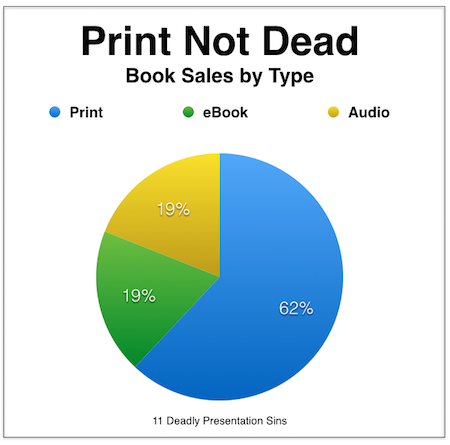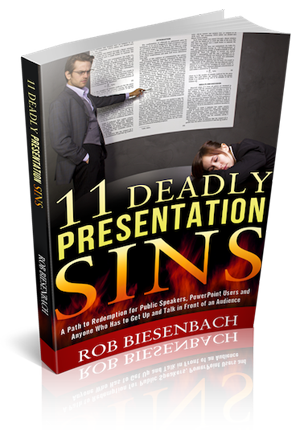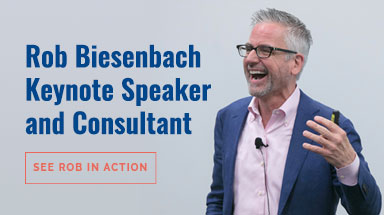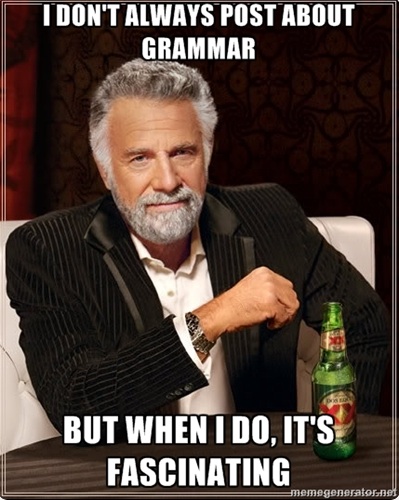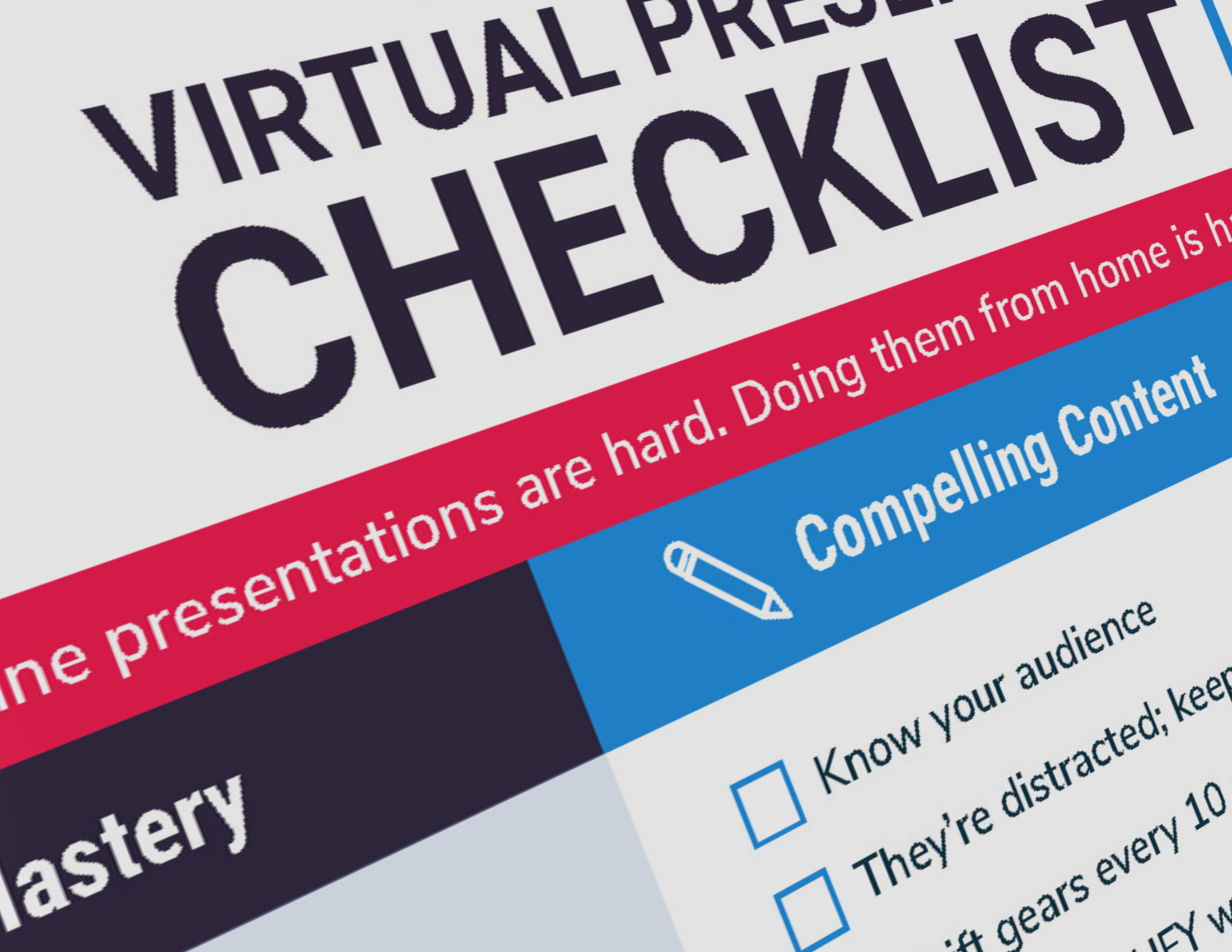My book, 11 Deadly Presentation Sins, is officially one-year-old this Saturday. Like any toddler, it’s caused me more than a few sleepless nights.
And, like parenthood, no matter how much you prepare, the process is still full of surprises. Even when you’ve done it before.
But this book was different, since I decided to publish it on my own. So here are the seven surprising lessons I learned about self-publishing that might be helpful if you’re thinking of writing your own book.
1. Print is Not Dead
Apparently, lots of people still want to put their hands on a real print book and thumb through its pages. I don’t, mind you, so I was surprised that more than half my sales were hard copy print books:
LESSON: It’s good to give readers options, and a print book requires just a few more steps beyond doing an ebook. Though your mileage, especially for a work of fiction, may vary.
2. Audiobooks are Popular
I’m thrilled that so many sales came in audiobook form — almost one out of five.
I did the audiobook mainly because I thought it would be fun to have and fairly easy to do. Easy because:
- The book is relatively short (2 hours).
- I happen to know a really great audiobook producer and voiceover artist/coach whose expertise and studio setup were instrumental.
- I could put my acting skills to work by doing the narration myself.
I don’t really go out of my way to market it as an audiobook, either. Audiobook lovers just seem to find it.
LESSON: Again, give people options.
3. Apple iBooks are Also Pretty Popular
I was commiserating with an author friend about how difficult Apple makes it to get your book into the iTunes store. Compared with the simplicity of Amazon and Barnes & Noble, the process is ridiculously long and complex.
But it appears to be worth it. A little over 20% of my eBook sales were in iBook form.
Unbeknownst to me, iBooks are really taking off.
LESSON: Just as you should publish in a variety of formats, you should offer your book on a variety of platforms. Though, interestingly, very few of my customers sought the book out on Barnes & Noble and Kobo.
4. Self-Distribution Can Work
Amazon’s whole model is built around the idea that ordinary people are going to have a hard time reaching a mass audience, so they need a distribution channel. And yet I sold nearly half my print books myself.
Direct or self-distribution isn’t for everybody. I sold many of these books as part of my speaking business, either in advance to event sponsors or afterwards to individuals.
LESSON: Even if you don’t have an obvious distribution channel of your own, a book can actually help you build that channel. I’ve actually won speaking business as a result of the book.
5. People are Generous
In advance of publication, I reached out to a lot of “influencers” in the public speaking industry — bloggers, fellow speakers, coaches and others.
A few ignored me, but many were more than willing to help. They wrote reviews, allowed me to guest blog for them, and one actually has bought several large batches of books for her own clients.
Imagine the self-confidence of a person who will willingly put a “competitor’s” product into her customers’ hands!
LESSON: In marketing your book, be fearless in approaching every expert you can find. (Just be courteous and professional about it, of course.)
6. People are Unreliable
This shouldn’t be a surprise. We all know this, right? But now I have data to back it up!
I offered subscribers to my email list a free copy of the book in return for them posting honest reviews on Amazon — a common industry practice. A lot of people took me up on the offer, but only half ended up doing their part by writing reviews.
Remarkably, 50% was the exact number I had been told to expect. And it was about the same number that my friend Gini Dietrich experienced with her recent book.
LESSON: Seek out people’s help, but keep your expectations in line with what we know about human nature.
7. Where Sales Come From is a Mystery
Determining the source of sales is difficult. In fact, I can only say with metaphysical certainty where 30% of my sales came from.
Those are the books that I directly sold to people — organizations that bought in bulk from me and individuals who purchased directly from me at speaking engagements.
As for the rest, Amazon and these others sellers don’t offer detailed analytics that would tell me, for instance, that a purchaser arrived on my Amazon page as a result of clicking a link on a guest blog post I wrote somewhere.
But I can generally discern where some sales come from. For instance, if I give a webinar for 500 people and see a spike in Amazon sales that day and the next, I can assume many of those were a result of that webinar.
In fact, based on that fuzzy math, I would estimate that more than half of my sales came from speaking engagements. (I could probably go through and match the dates of big events to sales records on Amazon and elsewhere and draw some rough conclusions. Maybe if I get an intern someday!)
Using the same inexact method, I would say that very few sales come from things like general media interviews, which I had also heard was true. That’s just not a place to easily target ready purchasers.
Either way, I have enough data to know that getting in front of audiences is a great way to sell books.
LESSON: Do what you can to measure and understand what works for you and what doesn’t.
What Didn’t Surprise Me About Self-Publishing
Here’s what did NOT surprise me about the process:
- Writing is the easy part. I’m certain I spent more hours on production and marketing than on the writing. I learned a lot — about the process, about the subject matter, and about myself.
- People are a lot less awed by your second book than by your first book.
- The book did not top the New York Times bestseller list. An estimated 11,000 business books are published each year (and that figure is a few years old). It’s very hard to rise to the top. And while I’d love to have sold more, right now I’m pretty happy with the book’s performance. And I’m confident in its continued potential, both as a product of its own and as a marketing tool for my business.
- Speaking of which, just as I planned, the book became an excellent platform for my speaking. I’ve given more than 10 presentations and workshops so far on the 11 Deadly Presentation Sins and have more on the way. So between book sales and speaking, I’ve recouped my self-publishing investment many times over.
- Finally, whether traditionally published or self-published, having your own book is a really satisfying accomplishment. Lots of people have ideas for books; far fewer see it through to publication.
In fact, it’s so satisfying, I may be writing another book this year. Stay tuned!
Where Can You Get This Book, You Ask?
Oh, by the way, if you still don’t have your own copy of 11 Deadly Presentation Sins, you can find out more about it here and purchase it in print, ebook and audio versions from Amazon, iBooks, Barnes & Noble and Kobo.
Confession: I am still not entirely sure what Kobo is!
